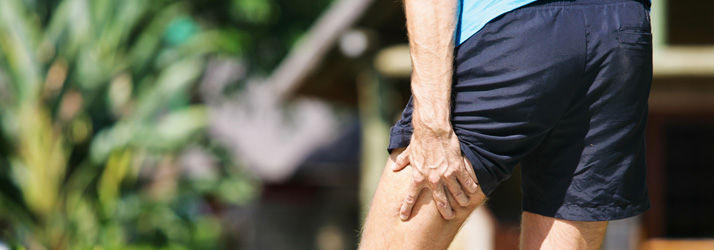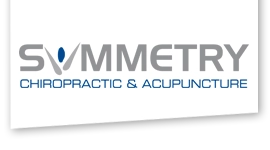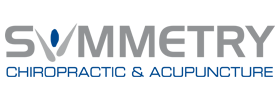SoftWave Therapy For Faster Recovery From Injuries in Naperville IL
SoftWave Therapy For Faster Recovery From Injuries in Naperville IL

Recovering from an injury can be a long and frustrating process. Whether you're dealing with a sports-related issue, post-surgical healing, or chronic pain, the path to recovery often feels slow and uncertain. For injured individuals seeking faster, non-invasive solutions to aid their healing, SoftWave Therapy offers a promising alternative. Contact our Naperville IL chiropractic clinic today to learn more.
This innovative treatment uses advanced shockwave technology to stimulate the body's natural healing processes at a cellular level-helping reduce inflammation, relieve pain, and accelerate tissue repair. In this blog, we'll explore how SoftWave Therapy works, why it's gaining popularity among injured patients, and how it could significantly improve your recovery outcomes.
What is SoftWave Therapy and How Does It Work?
SoftWave Therapy is a non-invasive treatment that uses low-intensity shockwaves to stimulate cellular repair and regeneration in injured tissues. These shockwaves-delivered via a specialized device-travel deep into muscles, tendons, ligaments, and joints to promote blood flow, reduce inflammation, and accelerate healing. The therapy targets damaged tissues without the need for injections or surgery, making it a safe and effective option for many injury types.
The technology behind SoftWave Therapy is known as electrohydraulic acoustic shockwave therapy. When applied to the skin, it produces a focused pressure wave that penetrates deep tissue layers. This pressure activates cell signaling pathways responsible for healing and triggers the release of growth factors, stem cells, and other regenerative compounds naturally present in the body. Unlike traditional ultrasound or TENS treatments, SoftWave goes beyond symptom management-it actually promotes structural healing at the cellular level.
For injured individuals, this means less downtime, improved mobility, and often quicker results compared to passive rest or conventional physical therapy alone. As a non-surgical, drug-free option, SoftWave Therapy appeals to patients looking for natural, holistic healing solutions without the risks of more aggressive interventions.
Benefits of SoftWave Therapy for Injury Recovery In Naperville IL
SoftWave Therapy offers a wide range of benefits for injured individuals aiming for a faster and more complete recovery. This innovative treatment doesn't just mask pain; it helps repair the underlying issue, allowing the body to recover more efficiently.
Here are some key benefits of SoftWave Therapy:
- Accelerated Tissue Repair: SoftWave increases blood flow and stimulates stem cell activity, which helps damaged tissues heal more quickly.
- Reduced Inflammation and Swelling: The therapy lowers inflammation markers, helping reduce pain and improve range of motion.
- Non-Invasive and Drug-Free: No surgery, needles, or medication is involved-minimizing risk and recovery time.
Pain Relief: Patients often report immediate or early relief from pain after treatment. - Improved Mobility: By decreasing stiffness and enhancing circulation, SoftWave helps restore movement in injured joints and muscles.
- Long-Term Healing Effects: Because it targets the root causes of injury, many patients experience lasting improvement even after therapy ends.
These benefits make SoftWave Therapy an attractive option for anyone looking to recover from injuries more quickly without compromising safety or comfort.
Types of Injuries Commonly Treated with SoftWave Therapy
SoftWave Therapy is versatile and effective across a wide range of musculoskeletal injuries. It's particularly useful for conditions where inflammation, limited blood flow, or scar tissue slow down healing. Injured individuals who haven't responded well to traditional treatments often find new hope with SoftWave.
Common injuries treated include soft tissue and tendon injuries such as rotator cuff tears, Achilles tendonitis, and plantar fasciitis. Joint issues like knee pain, frozen shoulder, and hip bursitis also respond well to this therapy. Athletes recovering from overuse injuries, including shin splints or hamstring strains, benefit from the deep regenerative action of shockwave treatment. Even chronic injuries that have lingered for months or years-such as tennis elbow or low back pain-can see dramatic improvements.
What makes SoftWave particularly valuable is its ability to enhance blood flow in areas that typically have poor circulation. For example, ligaments and tendons don't heal as easily due to limited vascularization. The therapy jump-starts the body's natural repair cycle in these stubborn areas, making it ideal for patients who want to avoid surgery or lengthy rehabilitation.
What to Expect During a SoftWave Therapy Session
Knowing what to expect from a SoftWave Therapy session can help injured patients feel more at ease before starting treatment. The process is straightforward and typically lasts 15 to 30 minutes, depending on the severity and location of the injury.
The therapist will first apply a gel to the treatment area, similar to an ultrasound exam. This ensures efficient transmission of the shockwaves into the tissue. The SoftWave device is then moved over the injured area, emitting pulses that feel like gentle taps or thumps. Some areas may be more sensitive, especially if there's a lot of inflammation, but most patients tolerate the sensation well without the need for anesthesia.
Throughout the session, the provider may adjust the intensity or frequency of the pulses based on your comfort and response. You might feel an immediate decrease in pain, though some improvement takes a few sessions to become noticeable. There's no downtime afterward-you can return to daily activities immediately, although high-impact exercise may be discouraged for a short period.
This simplicity, combined with tangible healing benefits, makes SoftWave Therapy appealing for individuals seeking a practical and efficient recovery method.
Comparing SoftWave Therapy to Other Recovery Treatments
When comparing SoftWave Therapy to other injury recovery methods, it stands out for its unique combination of effectiveness, safety, and convenience. Traditional approaches like physical therapy, rest, and medication often provide limited relief and can take weeks or months to show results. SoftWave accelerates healing by working directly on a cellular level.
Unlike cortisone injections, which only mask inflammation temporarily, SoftWave promotes actual tissue regeneration. Compared to surgery, it eliminates the risks, costs, and downtime associated with invasive procedures. While physical therapy is important, combining it with SoftWave can often enhance results by preparing the tissues to respond better to movement and strengthening exercises.
Here are some key advantages of SoftWave over other treatments:
- Faster healing compared to rest alone
- No risk of addiction or side effects like with pain medications
- No incisions, scarring, or recovery downtime like surgery
- Stimulates long-term healing, not just short-term relief
- Can be integrated with rehab programs for optimal outcomes
For injured individuals weighing their recovery options, SoftWave Therapy offers a compelling alternative that bridges the gap between passive healing and invasive intervention.
How Quickly Can You Expect Results with SoftWave Therapy?
One of the most common questions from injured individuals is how soon they can expect relief or improvement with SoftWave Therapy. The answer depends on the type and severity of the injury, but many patients notice reduced pain or increased mobility after just one or two sessions.
Initial results often come from the immediate anti-inflammatory effect and improved blood flow that the therapy provides. As treatments continue-typically over 4 to 6 sessions-deeper tissue repair begins to take place. This includes cellular regeneration, collagen production, and stem cell activation. These processes take a bit longer, but they lead to more lasting results than temporary treatments like ice packs or pain meds.
In chronic or more severe cases, a full course of treatment may extend over several weeks. However, because SoftWave doesn't involve surgery or medications, it can be repeated or used alongside physical therapy without additional risk. Patients often report progressive improvements in mobility, strength, and overall comfort with each session.
If you're eager to return to activity, sport, or pain-free daily living, SoftWave Therapy offers one of the fastest and most sustainable paths to recovery available today.
If you're struggling with an injury and want a faster, non-invasive path to healing, SoftWave Therapy may be the solution you've been looking for. At Symmetry Chiropractic & Acupuncture in Naperville, Illinois, Dr. Timothy Erickson offers personalized treatment plans using cutting-edge SoftWave technology to help you get back to living pain-free. Don't let injury slow you down-schedule your consultation today and take the first step toward a full recovery with SoftWave Therapy.
OFFICE HOURS
Monday
9:30am - 12:30pm
3:00pm - 6:00pm
Tuesday
9:30am - 12:30pm
3:00pm - 6:00pm
Wednesday
9:30am - 12:30pm
3:00pm - 6:00pm
Thursday
9:30am - 12:30pm
3:00pm - 6:00pm
Friday
9:30am - 12:30pm
3:00pm - 6:00pm
Saturday
9:30am - 12:30pm
Sunday
Closed
Symmetry Chiropractic & Acupuncture
3108 Illinois Rte 59 Ste 124
Naperville, IL 60564



